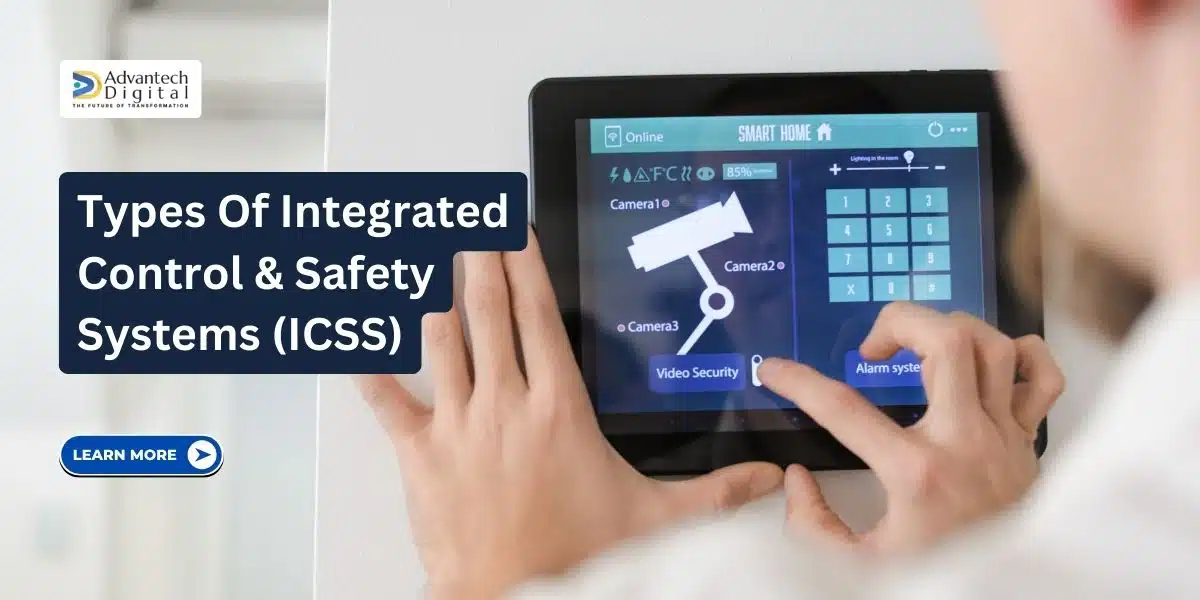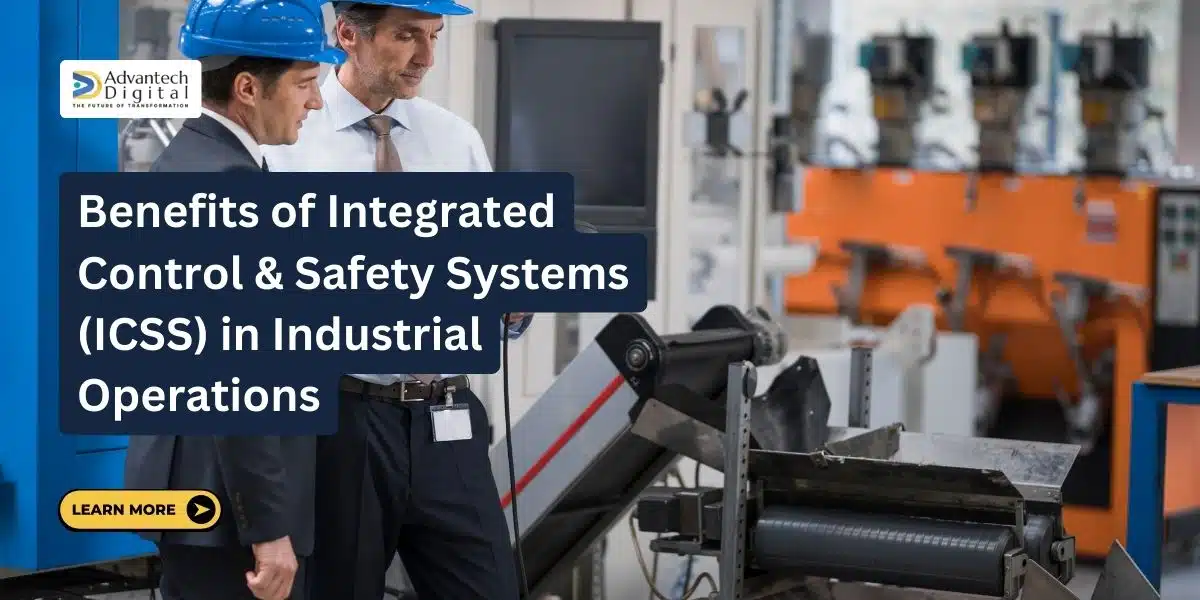Types of Integrated Control & Safety Systems
Industrial automation relies heavily on integrated control & safety systems (ICSS), which seamlessly combine control and safety functions to optimize operations and maintain a safe working environment. ICSS plays a crucial role in regulating processes, monitoring critical variables, and implementing safety measures in industrial settings where precision, efficiency, and safety are paramount. ICSS enables the monitoring, control, and response of dynamic industrial processes in real-time by integrating a variety of hardware and software components. By enhancing operational efficiency while prioritizing personnel and asset safety, ICSS offers a comprehensive solution for managing production parameters and detecting and mitigating potential hazards. Through this introduction, we will explore the diverse components, functionalities, and applications of ICSS across different industries, highlighting their essential role in modern industrial automation. Key Takeaways: Integrated Control & Safety Systems (ICSS) integrate control and safety functions to optimize industrial processes. Safety Instrumented Systems (SIS), Emergency Shutdown Systems (ESD), and Fire and Gas Systems (F&G) are crucial components of ICSS. The Distributed Control System (DCS) coordinates variables while the Programmable Logic Controller (PLC) automates them. Using Human Machine Interfaces (HMI), operators can monitor and control industrial processes intuitively. In industrial facilities, an ICSS enhances operational efficiency, improves safety, and ensures regulatory compliance. Types of Integrated Control & Safety Systems (ICSS): Process Control System (BPCS): A key component of integrated control and safety systems (ICSS) is the Process Control System (BPCS). This section will explore the functionalities, components, and importance of BPCS in industrial automation. BPCS is mainly focused on regulating and optimizing production processes within industrial environments. Functionality of BPCS: BPCS monitors and controls various parameters in the production process to ensure optimal performance and efficiency. These variables include temperature, pressure, flow rates, and chemical composition. To maintain desired operating conditions and meet production targets, BPCS continuously monitors these parameters and makes real-time adjustments. Components of BPCS: Sensors and Actuators: BPCS relies heavily on sensors to capture data related to process variables. Sensors measure parameters such as temperature, pressure, level, and flow, which are essential inputs into control algorithms. In contrast, actuators adjust process variables in response to control signals generated by the system. Control Algorithms: BPCS utilizes sophisticated control algorithms to analyze data from sensors and determine appropriate control actions. PID (Proportional-Integral-Derivative) controls, cascade controls, and feedforward controls are common control strategies. These algorithms use mathematical models and logic to regulate process variables and optimize system performance. Control Interface: As the BPCS’s user interface, the control interface allows operators to monitor and adjust process operations as needed by providing access to control parameters, setpoints, alarms, and historical data. Importance of BPCS Industrial automation relies heavily on BPCS for a number of reasons: Process Optimization: The BPCS technique continuously monitors and adjusts process variables so that production processes can be optimized to maximize efficiency and productivity. This results in improved product quality, reduced waste, and increased profitability. Operational Stability: BPCS maintains a safe operating limit to ensure operational stability. In order to enhance operational reliability, BPCS prevents deviations from desired setpoints, minimizing equipment failures, process upsets, and safety incidents. Regulatory Compliance: In many industries, there are regulatory requirements that govern process operations and emissions. BPCS provides control strategies that comply with environmental, health, and safety regulations. Enhanced Safety: Furthermore, BPCS enhances the safety of industrial facilities and optimizes process performance. In addition to protecting personnel, equipment, and the environment from hazardous processes, BPCS implements safety interlocks, alarms, and emergency shutdown procedures. Safety Instrumented System (SIS): A safety instrumented system (SIS) is an essential component of an ICSS that detects abnormal conditions and initiates safety measures to prevent accidents. The functionality of SIS: SIS continuously monitors process variables and activates safety functions when predetermined conditions indicate hazardous situations are identified. It acts independently from the main control system in order to provide fail-safe protection. Components of SIS: Sensors and Final Elements: Sensors detect abnormal conditions, such as high pressure or temperature, while final elements, such as shutdown valves, act upon the signals received to mitigate risks. Logic Solver: The logic solver evaluates inputs from sensors and determines appropriate responses based on predefined safety logic. Safety Instrumented Functions (SIFs): The SIS performs these specific safety actions or functions to mitigate identified risks. Importance of SIS: Risk Mitigation: SIS’s rapid response to hazardous conditions significantly reduces the likelihood and severity of accidents. Compliance with Safety Standards: Through the implementation of SIS, industry-specific safety standards and regulations are ensured. Protection of Personnel and Assets: SIS protects personnel, equipment, and the environment from potential hazards. Emergency Shutdown System (ESD): Emergency shutdown systems (ESD) are essential components of ICSS and are designed to shut down industrial processes during emergencies to minimize risks rapidly. Functionality of ESD: When a critical event occurs, such as an equipment failure, deviation in process, or hazardous condition, the ESD system is triggered. It is responsible for restoring the process as quickly and efficiently as possible. Components of ESD: Shutdown Valves: These valves isolate the process equipment or sections of the facility to prevent the spread of hazards. Emergency Stop Buttons: Manual emergency stop buttons allow operators to initiate emergency shutdowns. Safety Logic Solver: ESD systems operate similarly to SIS systems by evaluating inputs and activating safety functions appropriately. Importance of ESD: Rapid Response to Emergencies: By providing rapid response to emergencies, ESD systems minimize risk mitigation and asset protection time. Prevention of Catastrophic Events: By quickly shutting down processes, ESD systems help prevent catastrophic events such as fires, explosions, and chemical releases. Protection of Personnel and Environment: By minimizing the impact of emergencies, ESD systems protect the well-being of personnel and the environment. Fire and Gas System (F&G): In industrial environments, Fire and Gas Systems (F&G) are integral components of ICSS. Functionality of F&G: Fire and gas detection systems continuously monitor the presence of flammable gases, toxic gases, and fires within the facility. Once such hazards are detected, they activate alarms, initiate mitigation actions, and provide early warning to personnel. Components of F&G: Fire Detectors: A fire suppression system is … Read more










